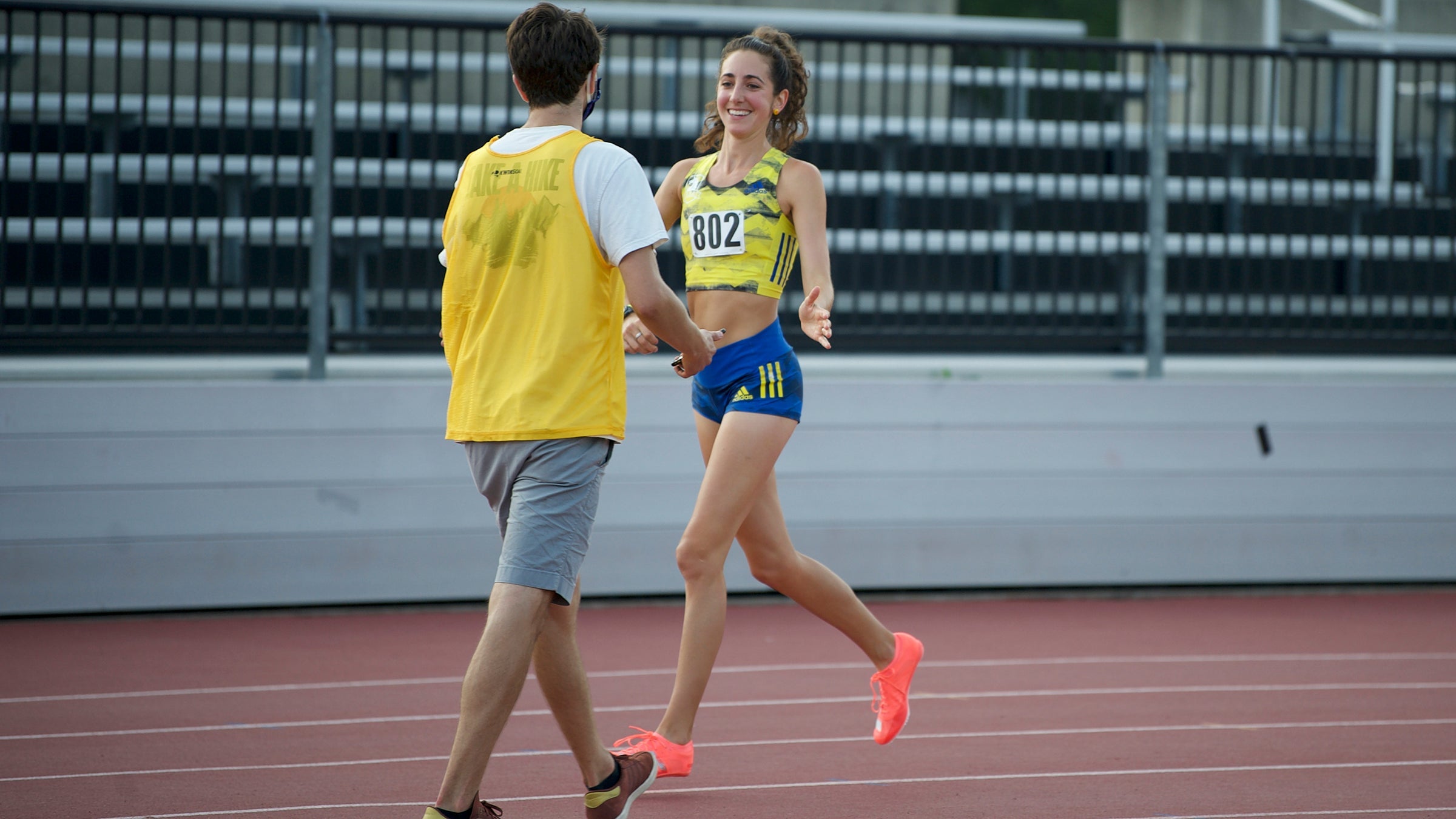It’s been since March — a good nine months at least — since most of us have raced. As you think about racing again, either virtually or in-person, it’s time to think about how you’ll handle the now unfamiliar mental and physical stress.
Some runners seem to be natural competitors. No matter how much time has passed since they’ve spiked up or squeezed into a starting corral, they show up at that first race ready to go, putting forth all-out efforts and battling for every place to the end.
Other runners talk of needing “rust-busters,” of “shaking off the cobwebs” and “dusting off the spikes.” They expect to spend a race or two finding their groove and reacclimating to the unique sensation (also called pain) of racing.
Whichever camp you identify with, there are tactics — both physical and mental — you can employ to set yourself up for a smooth return to competition. Three elite runners share the strategies they’re using this fall and winter to do just that.

Visualize the Race
Boston Athletic Association and Adidas pro Elaina Tabb, who specializes in the 5K through half marathon, is no stranger to the power of mental rehearsal. “Visualizing has always been an important tool for me,” she says. It’s even more important this year with her first race not happening until seven months after COVID-19 shut down U.S. events.
Tabb focused on mental preparation during her buildup to the Labor Dar Showdown 5,000m, an elite-only, spectator-free meet she and her husband Brian hosted. “I constantly visualized how I would feel at different parts of the race and made sure I got to that level in workouts,” Tabb says. “I visualized the different race scenarios that could have taken place so that I was prepared for whatever came my way. I visualized competing, instead of worrying about time or pace.” That preparation paid off for Tabb with a lifetime best of 15:27.
Trust Your Instincts
Noah Droddy, a 10K-to-marathon runner who trains in Boulder and represents Saucony and Roots Running, hasn’t raced in over a year due to injury and the pandemic. Years of competing, however, have shown him that he’s not in danger of forgetting how to race.
“I’m trying to remind myself often that I am a competitive person, and that doesn’t just go away,” Droddy says. And no matter how long it’s been, he knows that when he gets back on a starting line, “that piece of me comes alive again. I know how to race, I’ve done it many times, and I need to have faith that the next time I hear a starting gun I’ll be ready to run like I always have.” Trust in his instincts will be a key component to Droddy’s long-awaited return to competition at The Marathon Project on December 20.
Iron out the Wrinkles
Mara Olson, a Peninsula Distance Club track and road runner and a UC San Francisco School of Medicine student, knows better than to leave race day logistics to chance. Like Droddy, Olson is preparing for The Marathon Project next month, and is currently “ironing out the wrinkles in all the little things that contribute to marathoning.”
For her, that list includes practicing bottle grabs, getting used to tight turns, dialing in her nutrition, doing solo long runs without headphones, and breaking in her racing flats. While race day inevitably brings unforeseen challenges, the purpose of Olson’s dress rehearsals is to control the controllables while minimizing the surprises.

Relish the Opportunity
Having endured both a hamstring injury and an extended racing void this year, Tabb recognizes that racing is a gift. Once she was able to run pain-free this spring, rather than forcing her way back to fitness, she chased it “in the most enjoyable way possible: listening to my body and running at my favorite spots.”
Tabb appreciated the normalcy and joy that running offered her in this otherwise stressful year, and carried that gratitude — for health and opportunity — with her into that first race back. “Sometimes all you need is to listen to your body and take care of it so that you can get to race day feeling refreshed and ready to get after it,” Tabb says.
Study the Course
Although Olson lives in a different state (California) from the one she’ll race in next month (Arizona), she’s getting to know the course from afar. What she’s scoping out: “Where will the water stations be, how might I be feeling at this point, how will I respond to being in a crowd or alone, where will my coach place herself, how will I stay inspired without a large group of fans like there were at the Trials, where are the mile markers?”
Depending on the nature of the race, it’s also worth finding out what nutrition will be available, if any, how the elevation changes within each mile, and what to expect from the surface of the course (asphalt, concrete, grass, gravel, mud, etc.).

Focus on Fitness
Rather than dwelling on all the races he hasn’t been able to run, Droddy finds it helpful to let something more productive consume his thoughts: his growing fitness. By locking in to his training and “handling the minutia on a day-to-day basis,” there’s less brain space available for doubt to creep in. And ultimately, the fitter he gets, the better chance he’ll have of a successful first race back next month.
“I know if I make it through my training block healthy,” Droddy believes, “my body will be ready to perform.”


